Two-year cycle budworm
Choristoneura biennis
The two-year cycle budworm is found in subalpine and boreal forests of B.C.'s Interior.
On this page
Description
Two-year cycle budworm is found primarily in central and northeast British Columbia. This budworm presence is distinguished by noticeable defoliation every second year, corresponding to the two-year life cycle.
Two-year cycle budworm larvae initially mine the needles, buds and new cones, and feed on current foliage after the buds open. The heaviest feeding occurs during the second year of larval feeding which occurs from late April through June.
Host tree species
The primary hosts are subalpine fir, white spruce and Englemann spruce. All ages of trees are susceptible.
Damage symptoms
The crowns of damaged trees appear reddish-brown from June to September. Several successive years of severe defoliation can cause mortality, particularly on immature or suppressed trees. Other damage includes top-kill, reduced seed production due to damaged cones, and height and volume loss.
Damage can be confused with other defoliators such as early feeding by the tussock moth or several species of cone worms. The different host species and provincial distribution distinguish species of budworm.
Identification images
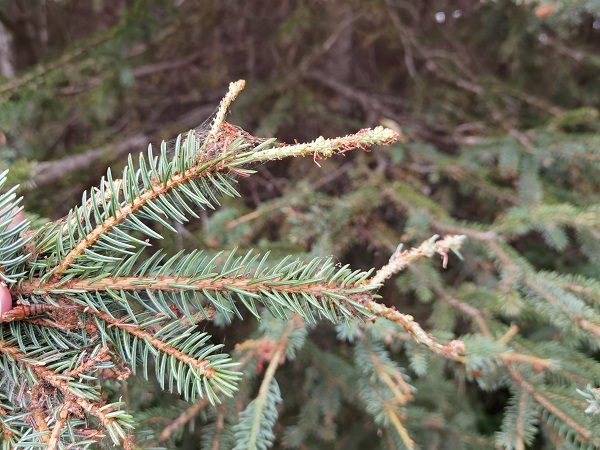
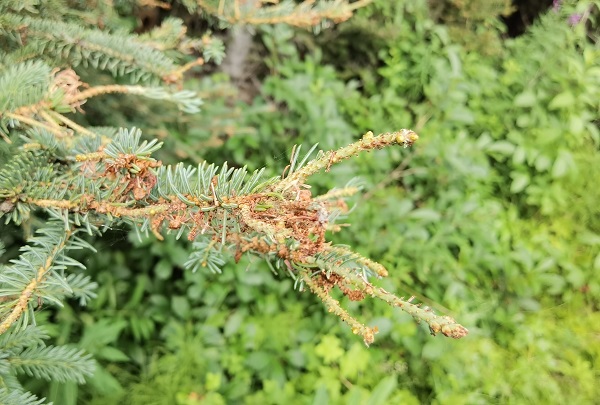
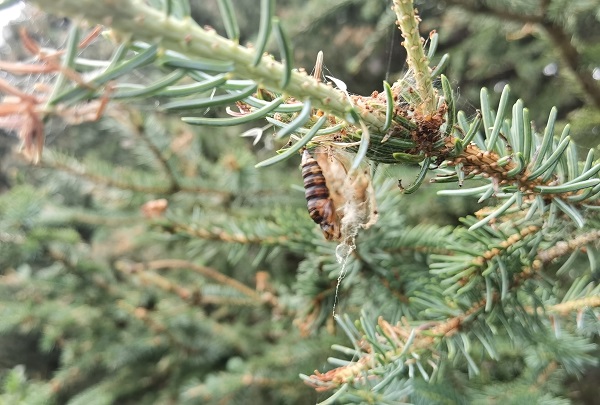
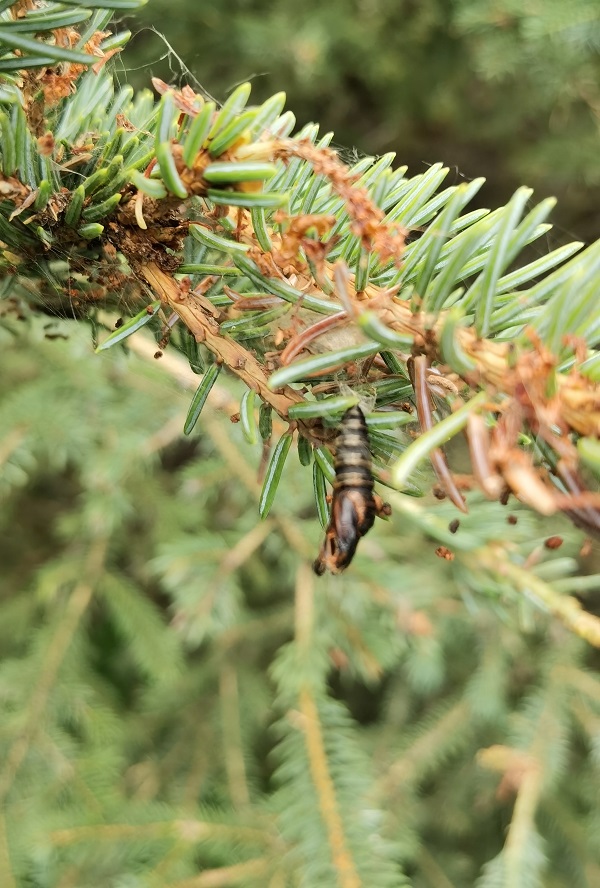
Pupae
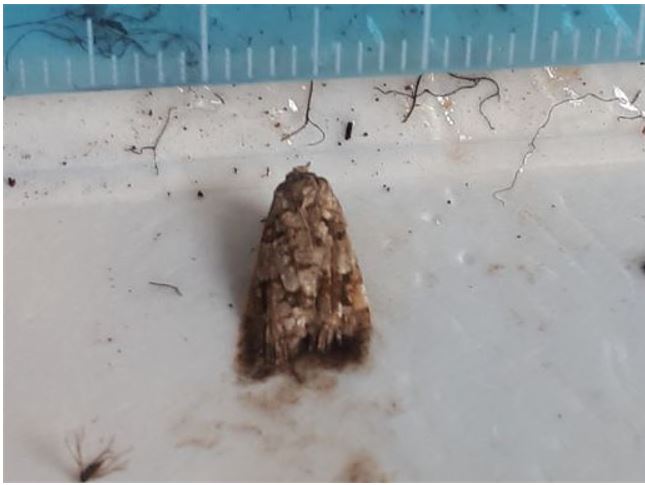
Moth
Further reading
Read more about the two-year cycle budworm in the Field Guide to Forest Damage in B.C. (PDF, 6.6MB)
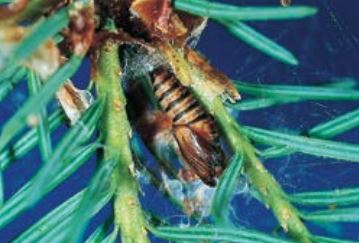
Type: defoliator
Targets: subalpine fir and hybrid white spruce
